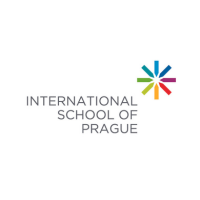Celebrating Innovation and Creativity: Highlights from Our Recent MYP Design Exhibition

International School of Prague
Published:
This past week, our school community came together for an MYP Design and Robotics Exhibition—a dynamic and inspiring celebration of creativity, problem-solving, and hands-on learning. Showcasing our Robotics Teams and projects from MYP Years 1, 2, and 3 (Grades 6–8) alongside contributions from high school students in Grades 9–11, the exhibition offered a rich snapshot of our students’ design journeys.
Grades 6–8: Foundational Projects on Display
As guests approached the exhibition, the hallway outside the Library was transformed into an eclectic gallery, greeting them with a vibrant display of work by our younger MYP students. Featured here were 3D-printed projects, upcycled creations, and box-making projects, all of which reflected the growing skills and creativity of our Grades 6–8 learners.
The 3D prints showcased students’ early experiences with CAD design and digital fabrication, ranging from keychains to custom accessories. The upcycling projects demonstrated both imagination and environmental awareness, as students transformed discarded materials into functional or artistic pieces. The box-making project, inspired by design principles and precision craftsmanship, included handmade wooden and cardboard boxes—each with unique purposes and decorative features.
Student-Led Robotics Challenge and High-Tech Demonstrations
Inside the main exhibition space, excitement buzzed around the LEGO Spike Robotics Competition, which was planned and run by our Grade 11 robotics students. These high school leaders took full responsibility for organizing the competition, guiding younger students, and managing the event. Their leadership turned the competition into a memorable, high-energy experience to showcase our young roboticists.
Also on display were our FTC and VEX competition robots, built and operated by the school’s high school robotics team. Visitors not only watched live demonstrations but were invited to drive the robots themselves, giving them hands-on experience with advanced engineering and coding in action.
Interactive Media and Digital Storytelling
The exhibition also featured a range of digital design work from Grades 9 and 10. Monitors throughout the room played student-created animations and videos, highlighting skills in visual storytelling, motion graphics, and digital editing. These multimedia pieces spanned genres from comedic shorts to thoughtful social messages, showing how students are using digital tools to express complex ideas.
A particularly popular section was the interactive storytelling zone, where iPads were loaded with “Choose Your Own Adventure” games created by students in both middle and high school. Middle school students used p5.js, while older students developed their stories in HTML and CSS. These branching narratives allowed visitors to engage with student-written code in a fun, game-like format that highlighted both creativity and logic.
Game Design and High School Innovation
Adding to the interactive excitement was a desktop computer featuring a fully playable game created by a high school student in the advanced coding class. Students and parents alike lined up to try it out. Designed and programmed from scratch, the game blended original artwork, complex mechanics, and thoughtful gameplay design, reflecting the advanced skills and dedication of its creator.
Fashion Design: Where Art Meets Function
In a stylish corner of the room, the fashion design display presented work by Grade 9 and 10 students. Mannequins and racks showcased original student-designed garments, accompanied by photos of the recent student fashion show. The clothing reflected both sewing skills and a deep sense of personal and cultural expression, adding a rich artistic dimension to the exhibition.
This year’s MYP Design Exhibition was more than a showcase—it was a celebration of student agency, innovation, and interdisciplinary learning. Whether building robots, designing digital adventures, sewing garments, or transforming recyclables, our students demonstrated not only skill and creativity, but also the ability to solve real-world problems and communicate their ideas effectively.
We are proud of each student who contributed and thankful to the teachers, coaches, and secondary school leaders who helped make the event such a success. The future of design looks bright in their hands.
